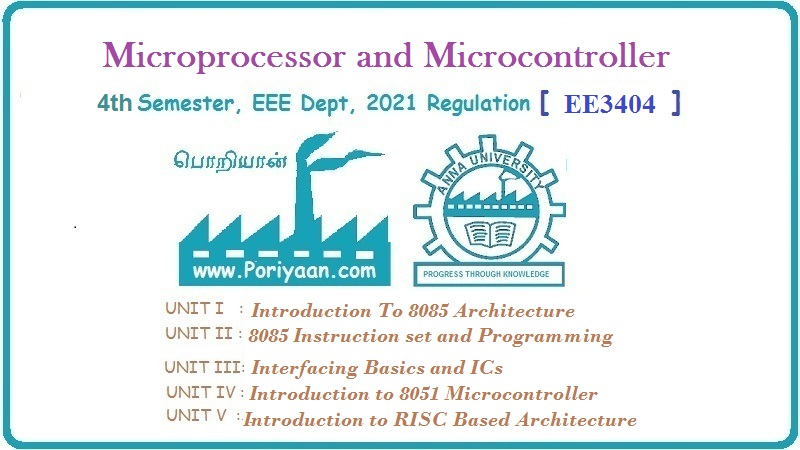Microprocessors and Microcontrollers: Unit I: (c) 8085 Timing Diagrams
Instruction Cycle, Machine Cycle and T-State
Question : 1. Distinguish between an instruction cycle, a machine cycle and a clock with an example instruction.
Instruction Cycle, Machine Cycle and T-State
AU
: May -08, Dec . – 09
During
normal operation, the microprocessor sequentially fetches, decodes and executes
one instruction after another until a halt instruction (HLT) is executed. The
fetching, decoding and execution of a single instruction constitutes an
instruction cycle, which consists of one to five read or write operations
between processor and memory or input/output devices. Each memory or I/O
operation requires a particular time period, called machine cycle. In other
words, to move byte of data in or out of the microprocessor, a machine cycle is
required. Each machine cycle consists of 3 to 6 clock periods/cycles, referred
to as T-states. Therefore we can say that, one instruction cycle consists of
one to five machine cycles and one machine cycle consists of three to six T-
states i.e. three to six clock periods, as shown in the Fig. 5.1.1.

There
are seven different types of machine cycles in the 8085A. Three status signals  , S1 and S0 identify each type as shown in Table 5.1.1.
These signals are generated at the beginning of each machine cycle and remain
valid for the duration of the cycle.
, S1 and S0 identify each type as shown in Table 5.1.1.
These signals are generated at the beginning of each machine cycle and remain
valid for the duration of the cycle.

Review Question
1. Distinguish between
an instruction cycle, a machine cycle and a clock with an example instruction.
AU : Dec-09, Marks 6
Microprocessors and Microcontrollers: Unit I: (c) 8085 Timing Diagrams : Tag: : - Instruction Cycle, Machine Cycle and T-State
Related Topics
Related Subjects
Microprocessor and Microcontroller
EE3404 MCU 4th Semester EEE Dept | 2021 Regulation | 4th Semester EEE Dept 2021 Regulation
